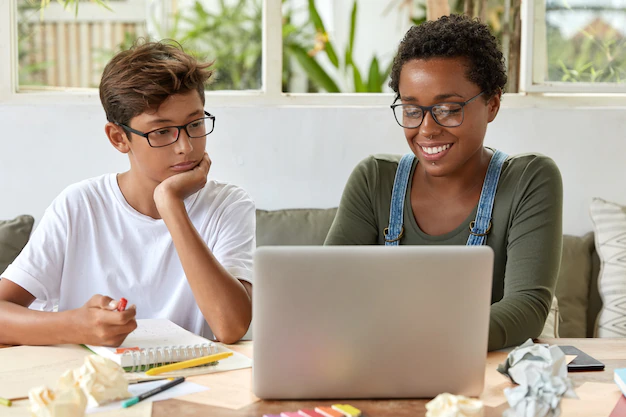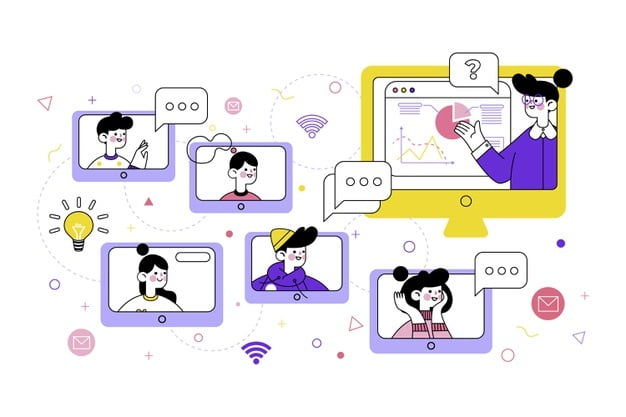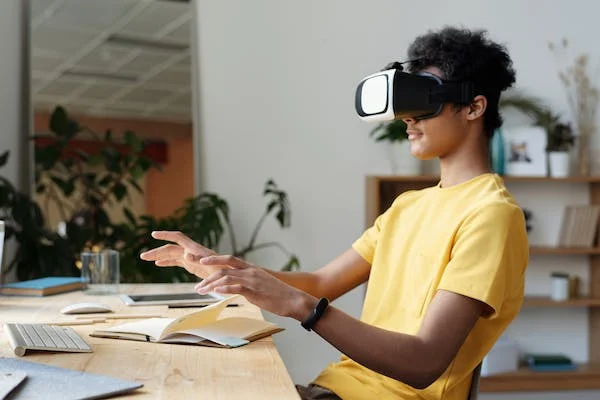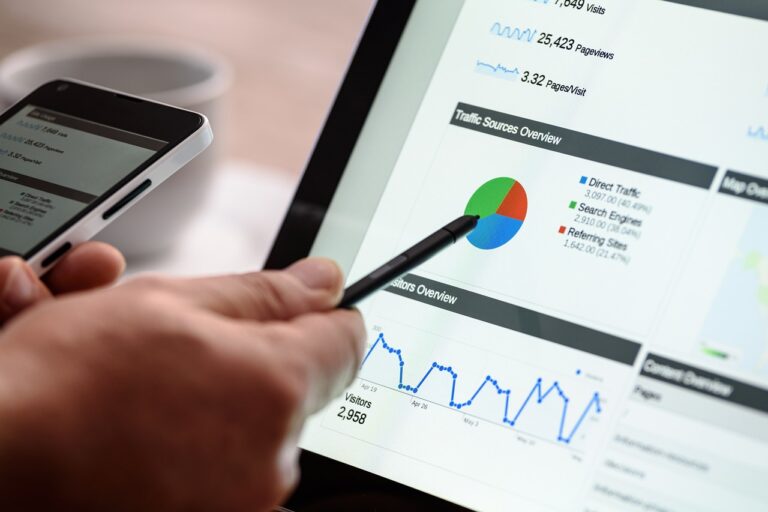The Bright Future of Blockchain Development Technology In Education
The future of blockchain development technology in education is set for take off! In a time when technology is improving, education is also keeping up with new ideas.
In the last few decades, computers, the internet, and different digital tools have been used in classrooms around the world. But, there is a new and innovative technology called blockchain development that is expected to greatly change and improve the education industry.
This technology was mainly used for cryptocurrencies before, but it has a big impact on how we keep track of, confirm, and exchange academic credentials and accomplishments.
The education industry has many problems with verifying degrees, keeping student information private, and securely storing records. These problems can be solved by using blockchain technology, which would greatly benefit the education sector.
Let’s explore what the future of blockchain development technology in education looks like.
Read: Futuristic Elements Of Blockchain Technology In Education
How Blockchain Technology Advances eLearning
1. Enhance Security
Blockchain technology can make eLearning platforms more secure by spreading out control and making the activity more open and clear to everyone involved.
It can securely store and confirm learner information, certificates, and qualifications, which lowers the chances of cheating and unauthorized access to data.
2. P2P Education
Blockchain can help people learn from each other by making platforms where learners can share knowledge, content, and resources with each other, without needing a middle person.
This way of doing things encourages people to work together, makes it easier for more people to get good learning materials, and makes things cheaper.
3. Trust and Authentication
Blockchain can help make sure that people’s skills and achievements are real by using digital identification systems that are spread out and not controlled by one organization.
This makes sure that the qualifications and certificates cannot be changed or altered and can be easily checked by different organizations and employers, which makes people have more confidence in online learning.
4. Copywriting and Micropayment
With blockchain, learning platforms can try out small payment models, where learners pay for specific parts of a course, individual lessons, or tests.
This technology helps make good educational materials and also keeps creators’ copyrights safe using smart contracts and timestamping.
5. Transparency In Recordkeeping
Blockchain is a technology that can keep educational records safe and traceable. It can store certificates, degrees, and qualifications. This makes sure there is a clear system for keeping records that cannot be changed, and makes it easy for employers to check if someone’s credentials are true.
6. Data and Personalization
Learning platforms can learn a lot about students by safely gathering and studying their data using blockchain technology. They can understand how students behave, what they like, and how they learn.
This information can be used to make your learning experience more personal, suggest things for you to learn about that are related to what you’re already studying, and help you do better in your learning overall.
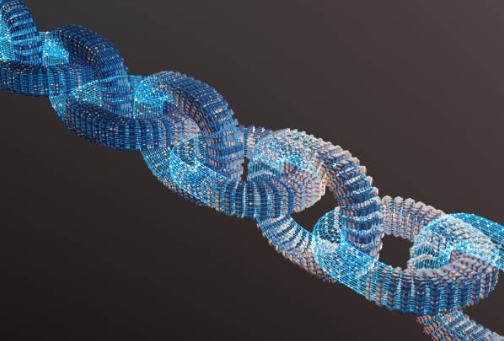
Application of Blockchain In eLearning
Blockchain technology can make learning better by making it more trustworthy, secure, and efficient. One way to use blockchain in eLearning is to verify credentials.
With blockchain, schools can create and store digital certificates or degrees in a secure way. This gets rid of the need to check things by hand, so it becomes simpler for employers or schools to confirm if a credential is real or not.
Furthermore, this can give learners more power and control over their educational records. Students can use a digital wallet on the blockchain to keep track of their accomplishments, certificates, or abilities.
This shows a clear and unchangeable record of their educational journey. They can easily share their qualifications with employers or schools.
A different way that blockchain is used in eLearning is through making and sharing educational materials, while also protecting them from being copied without permission.
Blockchain can create a system where teachers can safely share their educational materials, making sure they get credit and their work is protected from being copied.
This can help people work together and come up with new ideas in the learning community. It also means that people who create things get paid fairly for their work.
The Strategic Combination of Blockchain and eLearning
The strong teaming up of blockchain technology and online learning has the ability to completely change the way education is done.
Blockchain technology is a type of technology that can make online learning platforms better by making them more transparent, efficient, and trustworthy.
Using blockchain technology, eLearning platforms can create secure and unchangeable records of students’ accomplishments, certifications, and qualifications. These records are kept on a system where many people have a copy, so it can’t be changed or faked.
This helps employers and schools trust that someone’s education is real, making the system more dependable and easily proven.
Moreover, it can allow for small payments and encourage learners with tokenized rewards, resulting in a more enjoyable and motivating learning atmosphere.
Students can get rewards or virtual objects for finishing classes, accomplishing goals, or showing what they know in certain subjects. You can use these rewards to help pay for more schooling, trade them for other things you want, or keep them as money you can grow over time.
In addition, blockchain can help people interact with each other on eLearning platforms without needing a middleman.
Blockchain allows learners and educators to communicate and collaborate directly without any middlemen.
It also allows them to share knowledge with each other. This way of doing things without central control helps create a feeling of togetherness and self-confidence, making online learning more open and available to everyone.
Moreover, the unchangeability and openness of blockchain technology can help solve problems like copying someone else’s work and stealing ideas.
Smart contracts can help people protect their ownership of creative work and make sure they get paid fairly for it. This can motivate people to create better educational materials.
The Future of Blockchain Development Technology In Education
The possibilities for using blockchain in education are very promising. Blockchain technology has many advantages like better security, improved handling of data, and enhanced verification of academic credentials. Here are a few things you can use this for:
Peer-to-peer Sharing
Blockchain can let learners have power and control over their school records. They can safely and directly show their confirmed qualifications to employers or other institutions, without needing intermediaries.
Secured recordkeeping
Blockchain is a safe and secure way to keep educational records such as degrees, certifications, and diplomas.
It cannot be changed or controlled by a single authority. This makes sure that the records cannot be changed or made up.
Verification of Credentials
With blockchain, schools and colleges can create digital certificates and diplomas that can be easily checked by employers or other schools.
Micro-credential
Blockchain allows individuals to demonstrate their specific skills and achievements through micro-credentials.
This helps people keep learning throughout their lives by offering a more detailed and adaptable way to get an education and advance in their careers.
Making Assessments Transparent
Blockchain helps to make assessments easy to understand and trustworthy by keeping a record of when information was added, who gave the assessment, and how it was graded.
This makes people have more faith and believe in the evaluation process.
Conclusion
It is important to mention that even though the potential is big, many challenges need to be faced in order for blockchain to be widely used in education. These challenges include solving technical problems, creating agreed-upon rules for the industry, and making sure people’s privacy is protected.
However, the future of blockchain in education appears to be hopeful for changing the way records are kept, verifying credentials, and providing more learning chances.


